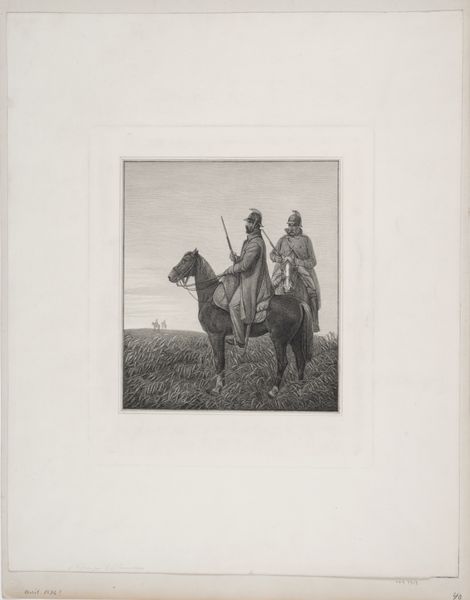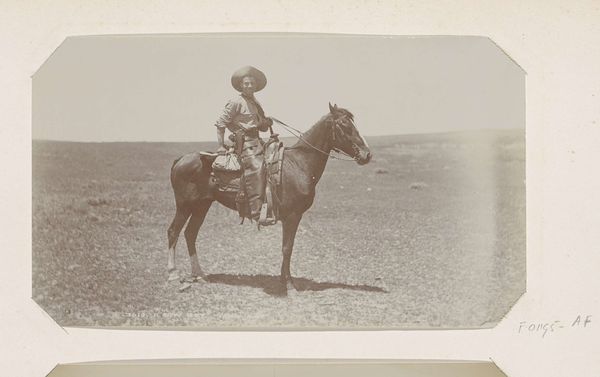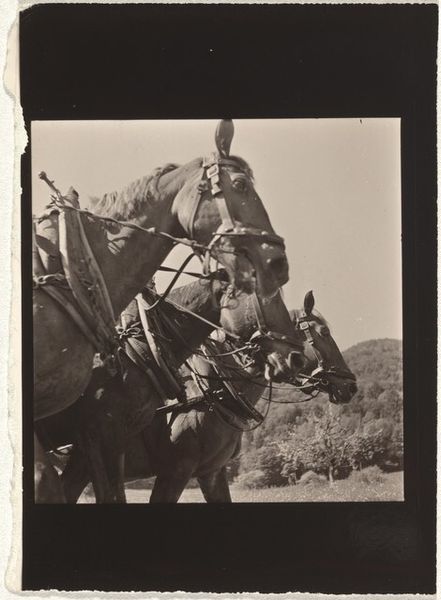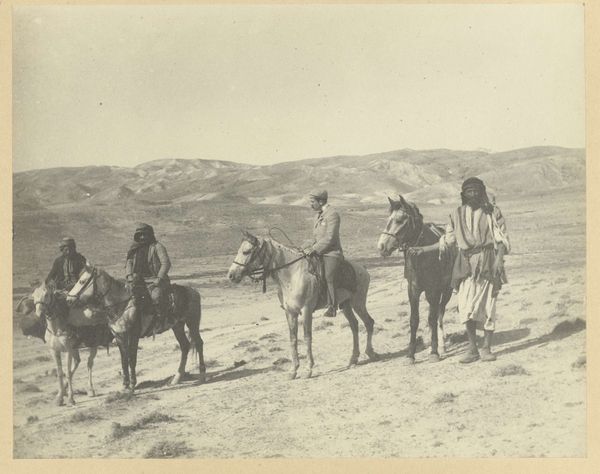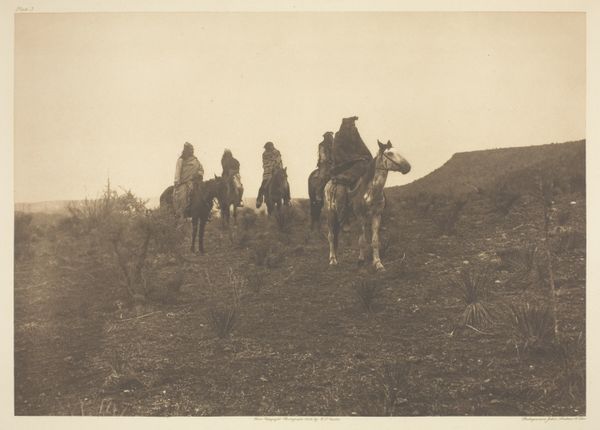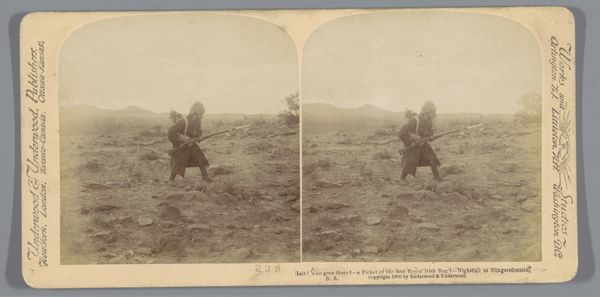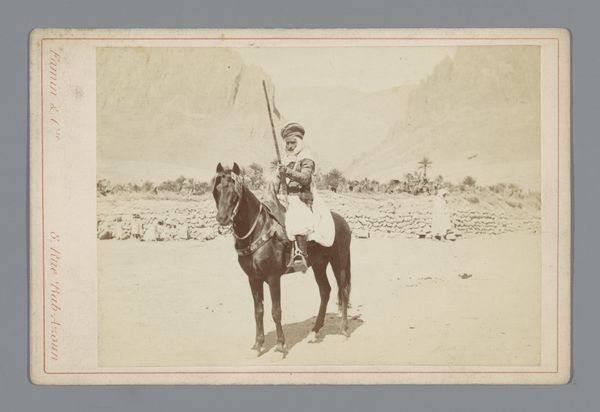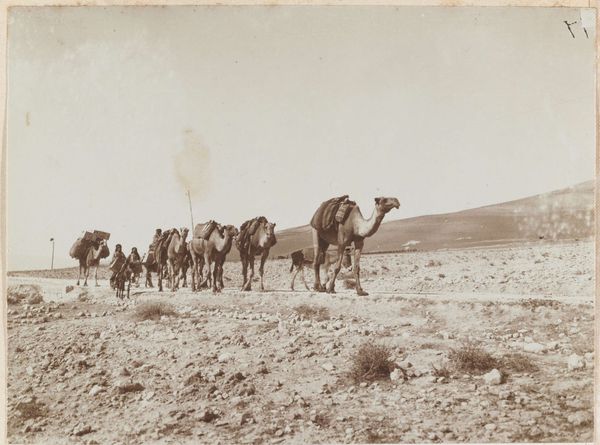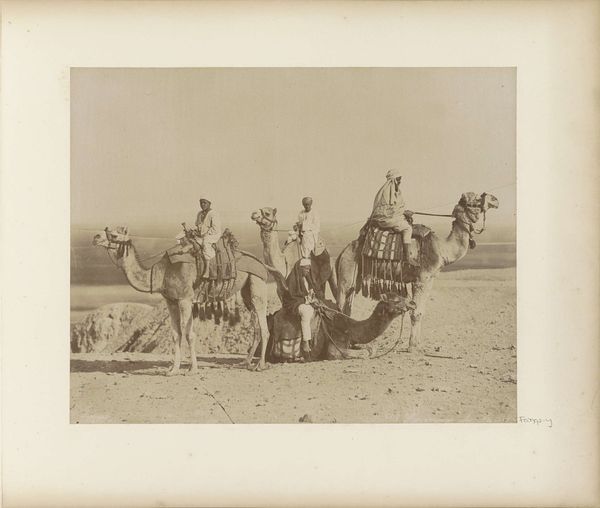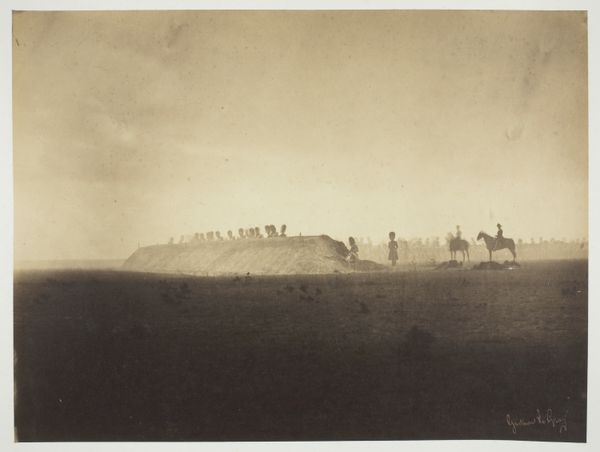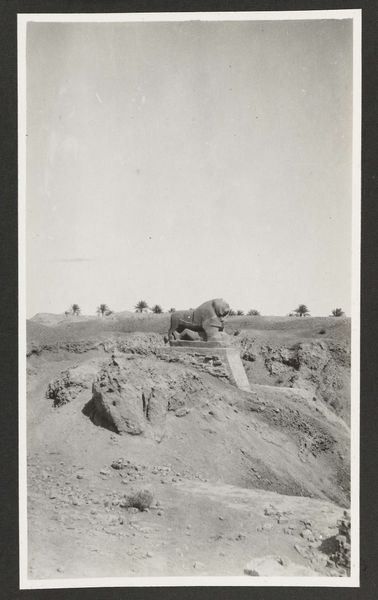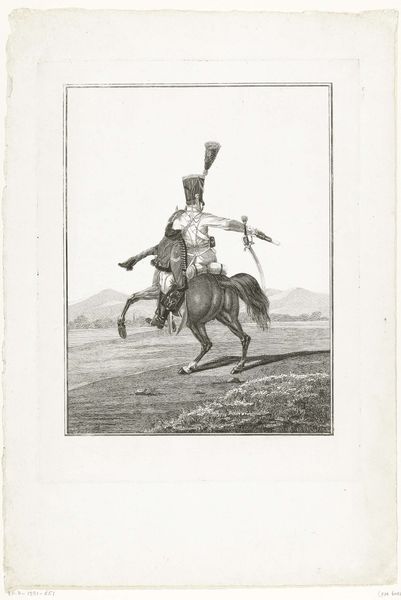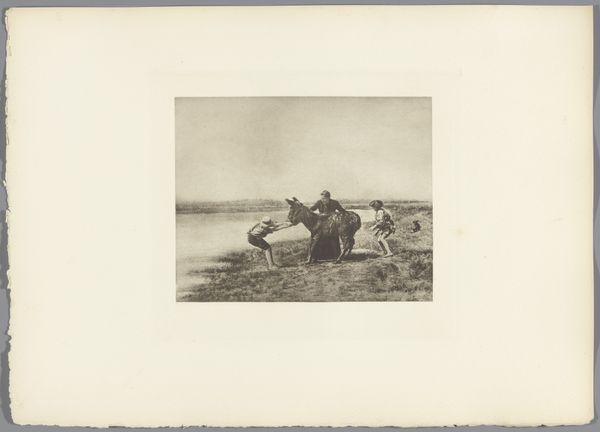
photography, gelatin-silver-print
#
landscape
#
photography
#
orientalism
#
gelatin-silver-print
#
realism
Dimensions: height 111 mm, width 83 mm, height 124 mm, width 184 mm
Copyright: Rijks Museum: Open Domain
Curator: This gelatin-silver print, thought to be from 1925, is entitled "Ruiter van de bereden politie in de Syrische woestijn"—that's "Mounted Policeman in the Syrian Desert" in English, attributed to A.G.A. van Eelde. Editor: It’s stark, isn’t it? The harsh light and limited tonal range lend a sense of desolation, of utter solitude. The image quality betrays its vintage—a little blurry and marked, but that just emphasizes the materials used to realize the photograph and what the subject had to face. Curator: I see it, too. The figure on the camel is central, dominating a vast, empty landscape. Camels, of course, have long represented endurance, patience, survival. In a desert context, that symbolism amplifies: they become almost emblems of resilience. The desert and mounted patrol evoke a certain trope from adventure stories. Editor: Indeed. It's intriguing to think about the role of photography at this time, how easily images, which appear 'true,' can promote particular cultural ideas, especially with photography's ability to reproduce a reality that might conceal specific viewpoints or colonial desires. How often were these images produced, printed, disseminated for others’ consumption? And who benefits? Curator: Precisely! Think about "Orientalism" as a stylistic movement—van Eelde's composition echoes that tendency to frame the East as exotic, mysterious, "other." It presents the rider and the landscape as timeless, unchanging, masking any contemporary realities of the region. We, of course, have inherited an expectation when considering similar pieces from our collective, cultural imagination. Editor: This really draws out those uncomfortable, entangled issues around power, image, and representation. The material, in this case, becomes a signifier not just of an image but of the apparatus from which this “truth” emerged. Also, it must be highlighted how crucial the photographic process is here because gelatin silver prints, while a vehicle of personal art, had such a role in anthropological research and classification. Curator: Absolutely. What starts as a seemingly simple snapshot opens up a complex dialogue. Considering its visual tropes in their original cultural context can bring new meaning. Editor: It goes to show how even an unpretentious piece, seen through a process and power analysis, can unravel unexpected stories about those who consumed it.
Comments
No comments
Be the first to comment and join the conversation on the ultimate creative platform.
